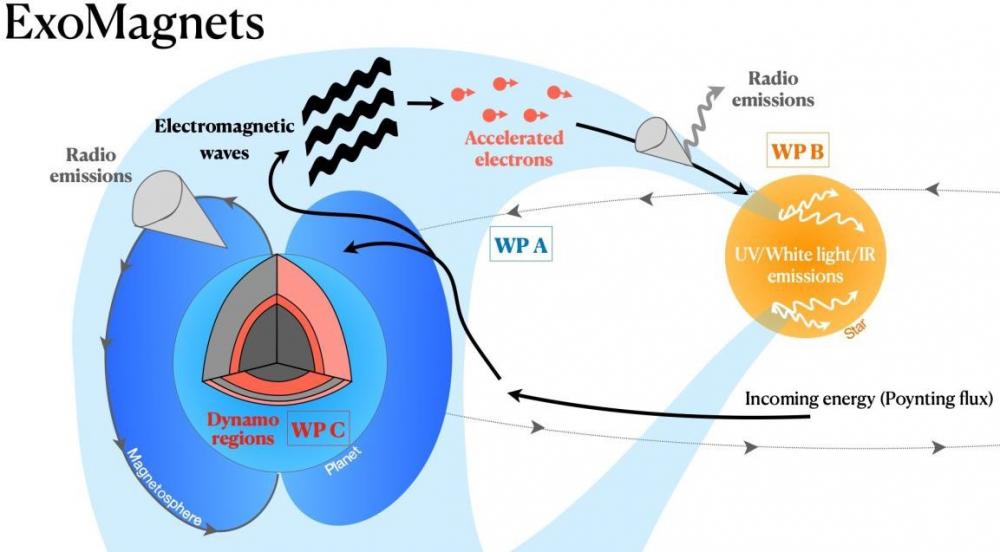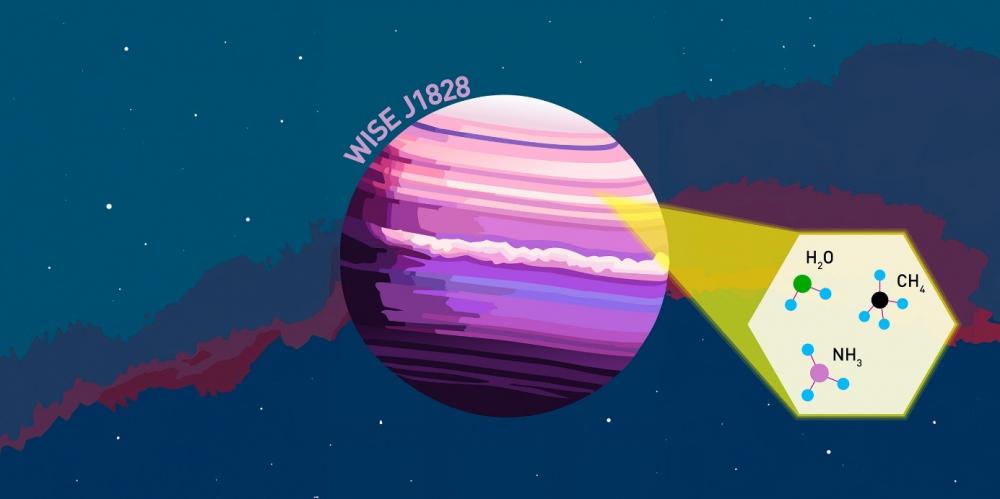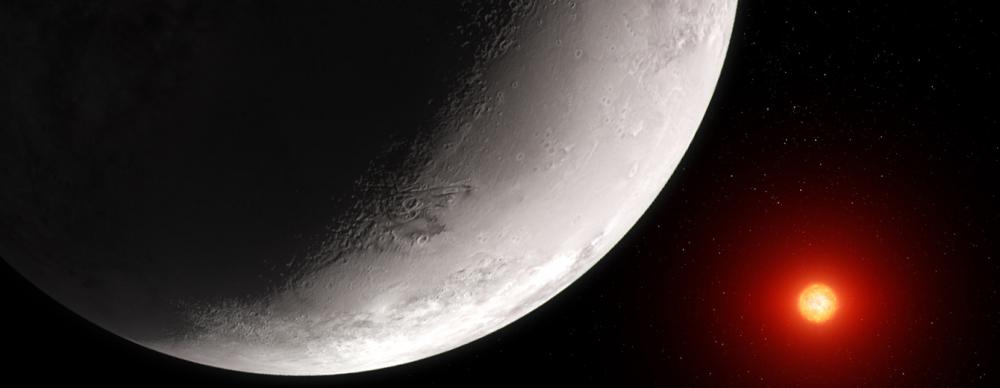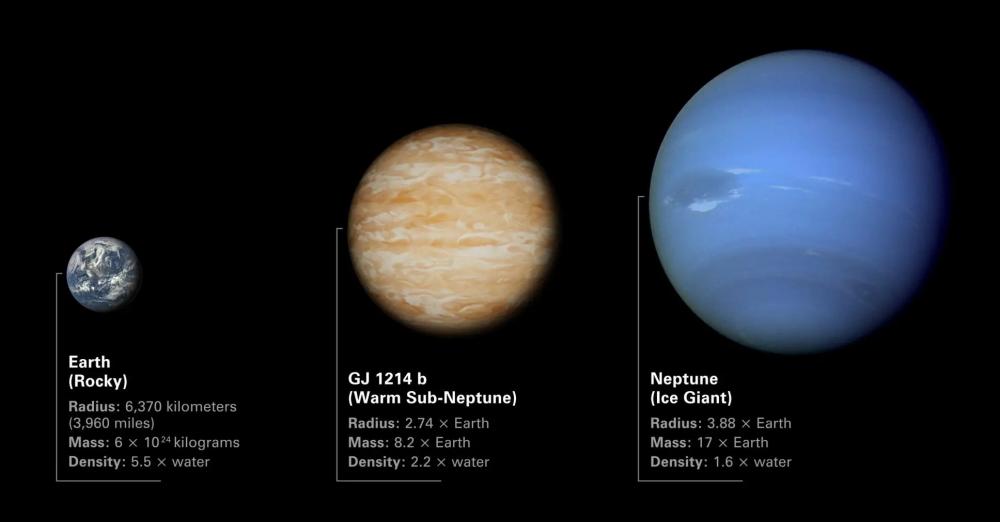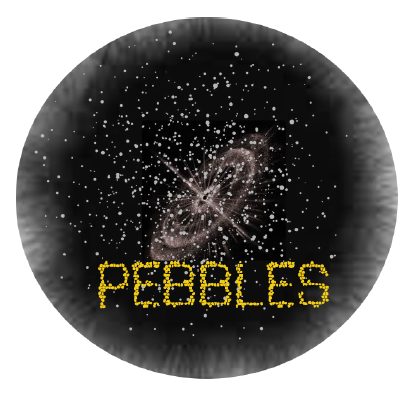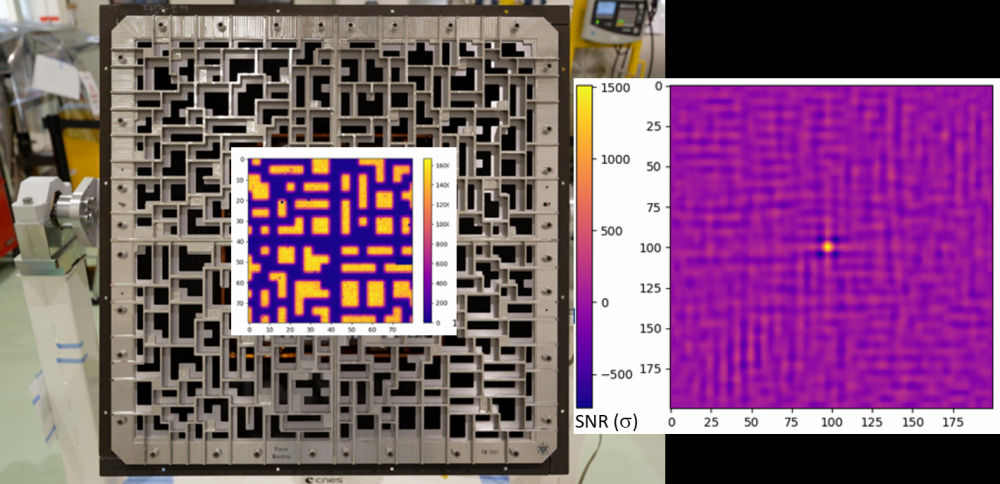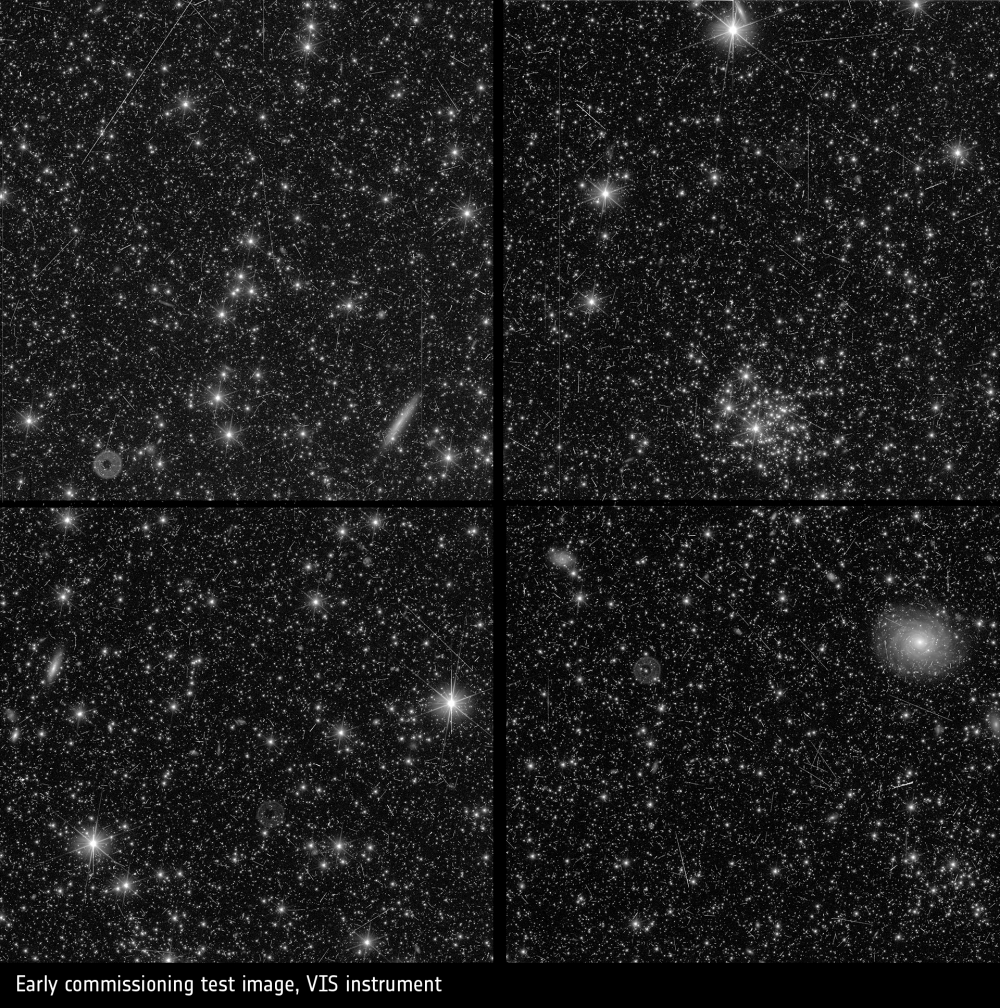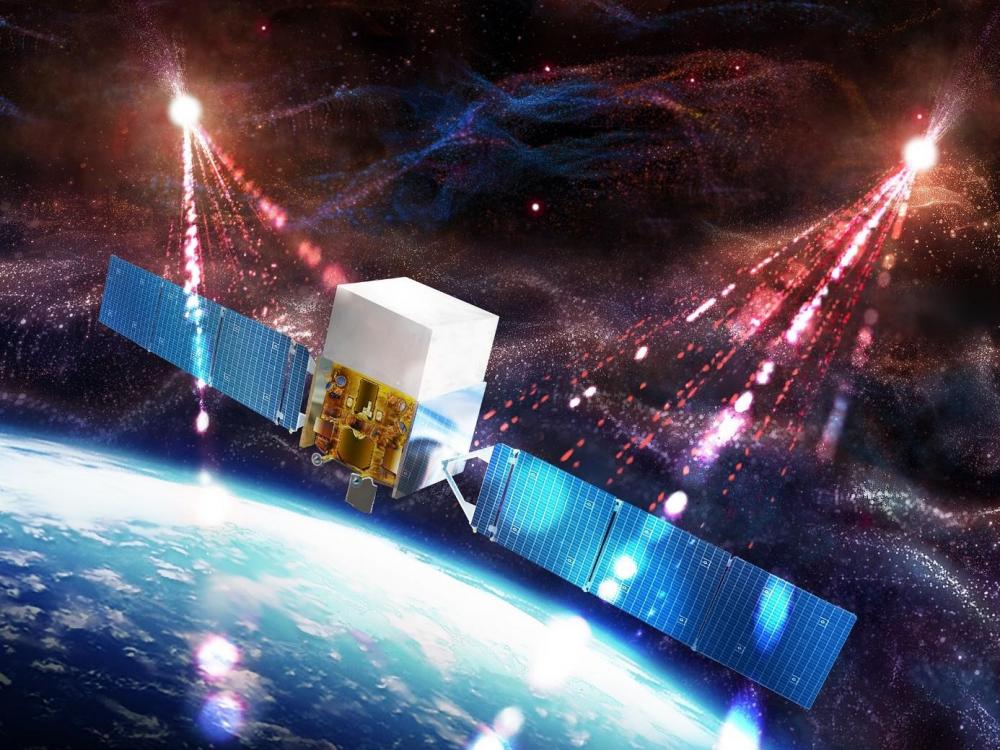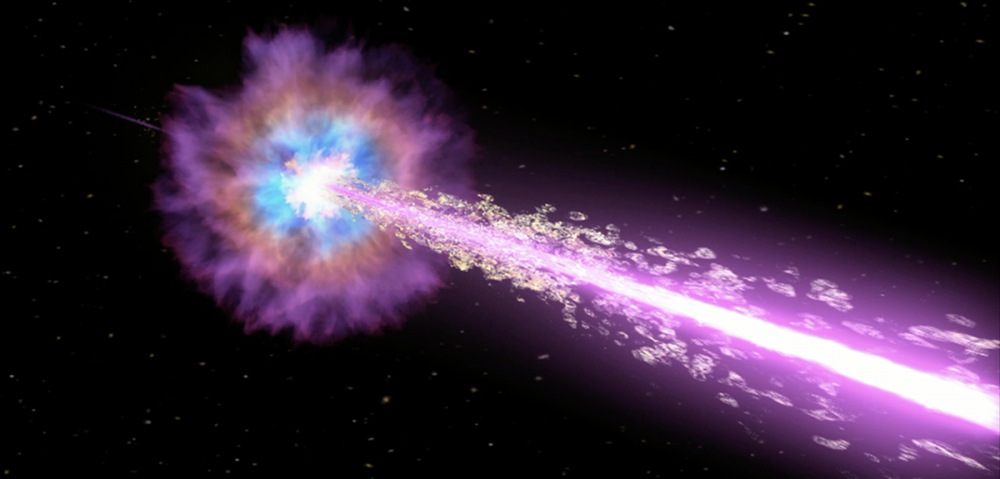News 2023
Fermi-LAT telescope continues systematic γ-ray survey
NASA's Fermi satellite was launched in June 2008, and the Fermi-LAT telescope has been carrying out a systematic γ-ray survey of near-GeV energies covering most of the sky every 3 hours (and the whole sky in no more than a week) since August 2008.
Antoine Strugarek, an astrophysicist in Irfu's Astrophysics Department, has been awarded an ERC Consolidator contract. The core of his ExoMagnets project is to understand the magnetic coupling between an exoplanet and its star, and therefore the magnetic field of exoplanets, which is crucial for the habitability of a planet.
The aim of the ExoMagnets project is to develop new theories and high-performance simulations using future exa-scale computing infrastructures in order to exploit existing and future observations of the magnetism of distant exoplanets.
The consortium of laboratories that has developed the MIRI instrument for the JWST is benefiting from guaranteed observation time. The CEA's Astrophysics Department, which is part of the consortium, has defined and coordinated the exoplanet observation programme. Among the objects selected are a number of brown dwarfs, which are excellent proxies for studying giant exoplanets, particularly those that orbit far from their star, much further away than the planets in our solar system. The physical and chemical processes that govern brown dwarfs are very similar. The first results concerning the cold brown dwarf W1828 have just been published in the journal Nature. By pointing the James Webb Space Telescope (JWST) at this object, a team of researchers including DAp-AIM researchers were able to use the MIRI instrument to measure, for the first time, the isotopologues of ammonia in the atmosphere of a cold brown dwarf, paving the way for a better understanding of the formation of exoplanets.
These results have been published in the journal Nature.
For the 17th edition of the Prix Jeunes Talents France, the L'Oréal Foundation rewarded 35 brilliant young female researchers in France, selected from 618 eligible applications by a jury of excellence comprising 32 researchers from the French Academy of Sciences. At Irfu's Astrophysics Department, Achrène Dyrek received the award for physics.
Achrène Dyrek has just obtained her PhD in astrophysics. She began her thesis in 2020 at CEA's Department of Astrophysics (DAp), under the supervision of Pierre-Olivier Lagage. During this time, she dedicated herself to the study of planetary atmospheres as seen by the James Webb Space Telescope (JWST - NASA/ESA/CSA), using the MIRI (Mid-InfraRed Instrument) developed at DAp.
Using the James Webb Space Telescope, a group of astronomers led by MPIA, in collaboration with a team from the Astrophysics Department of CEA Paris-Saclay, searched for an atmosphere on the rocky exoplanet TRAPPIST-1 c. Although the planet is almost identical to Venus in terms of size and mass, its atmosphere turned out to be very different. By analyzing the heat emitted by the planet, they concluded that it may have only a tenuous atmosphere containing a minimum of carbon dioxide. However, this is also consistent with a barren rocky planet devoid of any significant atmosphere. This work gives us a better understanding of how the atmospheres of rocky planets orbiting low-mass stars can withstand strong stellar winds and intense UV radiation.
The results are presented in the journal Nature:
Discovered in 2009, exoplanet GJ1214b orbits a small star just 40 light-years away. With a mass around six times that of Earth and an atmosphere made up of hydrogen and helium, it is considered a "mini-Neptune".
A team from NASA, in collaboration with researchers from CEA Paris-Saclay, pointed the JWST at the planet using the MIRI instrument, built by CEA Paris-Saclay, for some 40 hours. This unprecedented observation made it possible to obtain, for the first time, the phase curve of an exoplanet with MIRI, i.e. complete tracking of the planet's rotation around its star.
By following the evolution of the exoplanet-star system's emission, the research team was able to determine the planet's temperature to within 9°: 280°C on the dayside and 164°C on the night side. Comparing the observations with atmospheric models, the researchers deduce that: 1. the small temperature difference between the two sides, despite the planet's synchronous rotation, means that there is a good exchange of energy between the sides, due to a dense atmosphere. 2. The relatively low temperature on the dayside, given the planet's proximity to its star, indicates that a layer of aerosols in the exoplanet’s upper atmosphere reflects much of the stellar radiation. The type of aerosol with such a property has yet to be determined. 3. The atmosphere contains many elements heavier than hydrogen and helium, probably abundant water.
The results are published in the prestigious journal Nature
The European Research Council has just announced the names of the winners of the Advanced Grant. This 2023 edition rewards in particular two researchers from the CEA's fundamental research department for their work in the fields of astrophysics and neuroscience. Anaëlle Maury is the leader of the PEBBLES project. This project consists of developing an innovative methodology to characterise the properties of dust around very young stars in the process of forming their proto-planetary disks. Dust is one of the key elements in the physical processes regulating the formation of stars and their planetary systems, but recent observations are overturning the models used until now to describe its evolution from submicron grains to pebbles. Observing and modelling the properties of dust grains during the earliest phases of disk formation promises to provide important insights into the conditions leading to the formation of solar systems such as our own. Through PEBBLES, the teams will use new dust models that are better suited to denser astrophysical environments and will use them in comparison with observations from space missions and ground-based observatories from the infrared to the millimetre range.
An international team of researchers has used NASA's James Webb Space Telescope to measure the temperature of the rocky exoplanet TRAPPIST-1 b. This is the world's first detection of thermal emission from a rocky exoplanet as small and “cool” as the rocky planets in our own solar system. TRAPPIST-1 b receives about twice the amount of energy as Venus receives from the Sun and four times more than Earth. The result indicates that the dayside of the planet has a temperature of about 227°C (500 K) and suggests that it has no significant atmosphere. The study, co-authored by three researchers from the Dap, has just been published in the journal Nature, on Monday 27 March.
Magnetars are neutron stars known for their wide variety of electromagnetic emissions coming from the dissipation of their extreme magnetic fields, which are the strongest known in the Universe and can reach 1015 Gauss, or 10 billion times that of the strongest magnet created by humans.
How could these magnetic fields have been formed? This is one of the open questions that a Franco-German team led by the supernovae team of the Department of Astrophysics (DAp) of CEA Paris-Saclay, has recently tried to answer by proposing a numerical modeling of a new scenario of formation of magnetars in a study published in the scientific journal "Astronomy and Astrophysics".
This scenario suggests that the matter falling on the neutron star a few seconds after its formation can trigger a dynamo effect called Tayler-Spruit which would amplify its magnetic field, and this independently of its initial rotation speed. The simulations of this scenario reproduces the measured intensity of magnetar magnetic fields. Therefore, this study represents another step towards the understanding these atypical objects.
CEA has delivered to CNES the flight version of the ECLAIRs instrument software for the SVOM satellite. This concludes a major instrumental development phase conducted by CEA over a period of 6 years to produce what is maybe one of the most complex software packages ever carried on a French scientific space instrument. The latest version of the software equips the ECLAIRs onboard computer, which departed to China in early 2023. It will be used during the satellite integration tests in Shanghai in preparation for the launch planned for early 2024. This software will analyse in real time the data from the instrument in flight, in order to detect gamma-ray bursts and localise them to better than 12 arcmin on the sky, to reorient automatically the satellite for follow-up observations, and to alert the scientific community.
To reveal the influence of the dark components of the Universe, over the next six years Euclid will be observing the shapes, distances and movements of billions of galaxies. This mapping will cover periods going back to the last 10 billion years of cosmic history, in order to gain a better understanding of where, when and how dark energy and matter - two key components of the universe that are still a mystery - act.
As a prelude to the mission, it was decided to illustrate the satellite's scientific and instrumental capabilities through a series of images of the nearby Universe. Jean-Charles Cuillandre, an astronomer in CEA/IRFU's astrophysics department, led this 'ERO' (Early Release Observations) campaign over several months, with a group of scientists from the Euclid collaboration and ESA, from the choice of the five astrophysical sources to image processing, from raw data to analysed images, combining the responses of the VIS (visible light) and NISP (near infrared) instruments.
The Euclid satellite, launched from Cape Canaveral on July 1st, is traveling to reach its orbit at the second Lagrange point, which it should reach in early August. This transit time has been used to commission Euclid, checking the satellite's services such as communications, power, and pointing, and then the two instruments, VIS and NISP, as well as fine-tuning the telescope's focus. The instrument teams have just released the first "raw" images (untreated) to mark the success of instrument commissioning.
Marc Sauvage (astrophysicist at DAp/Irfu and one of the two French representatives on the Euclid consortium council): "These images perfectly match what we had simulated, but in a simulation, we know that everything we see was deliberately placed there, so in a way, it's not surprising. Here, everything we see is real, and nothing we see was known at this level of detail; it makes us want to look into every corner, to enlarge everything to see as much detail as possible. And since there is a tremendous amount of detail in just these two images, it becomes dizzying!"
Michel Berthé (Euclid project leader at DAp/Irfu): "I am truly amazed by the beauty of these images and the amount of information that can be found in them. We are only at the very beginning of the analysis of these initial results, but they are already very promising.
All the teams at CEA who have worked for more than 10 years on the design, production, and testing of the elements we have provided for the VIS and NISP instruments are particularly proud of these initial results, which demonstrate the nominal operation of our supplies as well as the entire satellite."
An international team led by French researchers, including those at DAp, publishes on November 28, 2023 in the Astrophysical Journal a compilation of 340 pulsars seen in gamma rays (30 MeV - 30 GeV) with the LAT space telescope on NASA's Fermi satellite.
Prior to Fermi's launch in 2008, only 11 pulsars were known in gamma rays. This new catalog brings together all the characteristics of all known gamma-ray pulsars. It contains a wealth of information on the mechanisms, poorly understood today, by which pulsar beams are generated. This wealth of centralized information will help theorists explore new avenues in their quest to understand these phenomena.
Astrophysical Journal Supplement 2023, Smith et al, The Third Fermi Large Area Telescope Catalog of Gamma-ray Pulsars
Fermi-LAT telescope continues systematic γ-ray survey
NASA's Fermi satellite was launched in June 2008, and the Fermi-LAT telescope has been carrying out a systematic γ-ray survey of near-GeV energies covering most of the sky every 3 hours (and the whole sky in no more than a week) since August 2008.
On October 9, 2022, at 13:16 and 59.99 seconds, a gamma-ray burst (GRB) dazzled almost all the X-ray and gamma ray detectors available at the time. Since their discovery, multi-wavelength telescopes in space and on the ground have continuously monitored these events. This outburst, named GRB221009A, shook the world community of astrophysicists, who have since been analysing it to understand the physical phenomena that triggered this most intense burst of energy in our history.
|
|
X-rays detection due to the scattering of light from the initial explosion of GRB 221009A by the dust of our galaxy, has led to the formation of expanding rings. This "movie" (in arbitrary colors) shows these rings formed by X-rays detected by NASA's Swift telescope. It was created by combining images captured over a 12-day period. Credit A. Beardmore, University of Leicester, NASA, Switf |
CEA has delivered to CNES the flight version of the ECLAIRs instrument software for the SVOM satellite. This concludes a major instrumental development phase conducted by CEA over a period of 6 years to produce what is maybe one of the most complex software packages ever carried on a French scientific space instrument. The latest version of the software equips the ECLAIRs onboard computer, which departed to China in early 2023. It will be used during the satellite integration tests in Shanghai in preparation for the launch planned for early 2024. This software will analyse in real time the data from the instrument in flight, in order to detect gamma-ray bursts and localise them to better than 12 arcmin on the sky, to reorient automatically the satellite for follow-up observations, and to alert the scientific community.

